See photos — some familiar and some rarely seen — from the Apollo 15 mission, which launched place 50 years ago today.
July 26, 2021, marks the 50th anniversary of a space mission that cannot be described as anything less than spectacular.
Apollo 15 was the first of NASA’s manned lunar “J” missions — Moon landings that supplied astronauts with a robust lunar lander capable of staying on the surface for three days. (The prior landings of Apollo 11, 12, and 14 topped out at about half that time).
The extra fuel and consumables carried by the advanced lunar lander allowed for three separate moonwalks (EVAs), each lasting 4 to 7 hours. NASA also updated the orbiting command module with additional cameras and equipment.
Apollo 15 launched on July 26, 1971, and returned to Earth on August 7th, with spaceflight veteran and mission commander Dave Scott, command module pilot Al Worden, and lunar module pilot Jim Irwin. The three astronauts met all of their mission goals and extended scientific knowledge of the Moon. In addition to extensive geology work, the Apollo 15 moonwalkers pioneered the use of the Lunar Rover, a small electric vehicle that extended their exploration range.
Despite a couple of jammed cameras that limited some of the planned photography, the Apollo 15 astronauts returned hundreds of still photographs (both color and black and white), along with some 16mm movies and hours of color TV coverage.
In celebration of the mission’s 50th anniversary, here are 20 amazing photographs from Apollo 15 — some familiar, many rarely seen — along with quotes from the men who, quite literally, called the Moon “home” for three days in 1971. (All photos are credited to NASA.)
Goodbye, Earth!

“We've been taking turns looking at the Earth through the telescope,” Scott radioed to Houston. “It's a fantastic sight.”
Landing Site in View
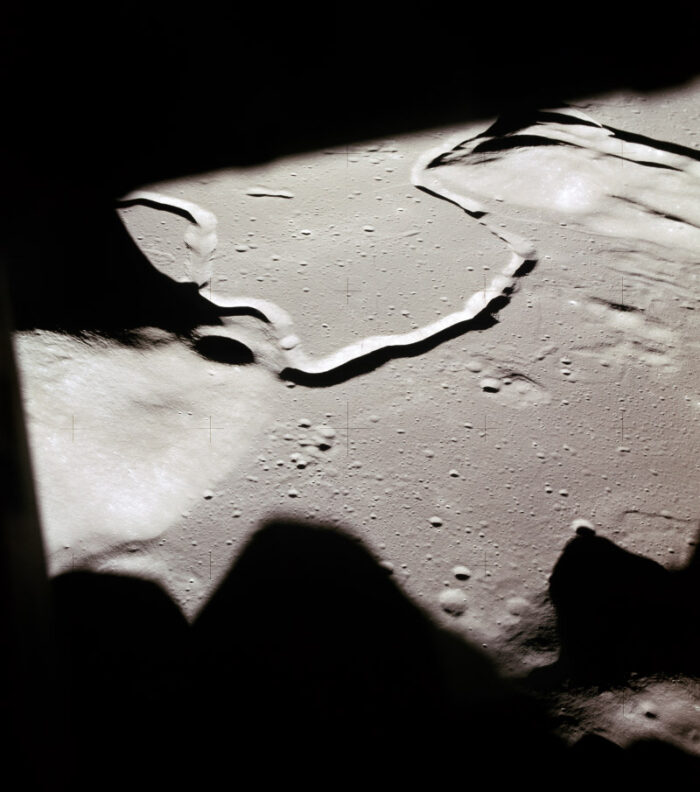
"Man must explore"

“As I stand out here in the wonders of the unknown at Hadley,” Scott said, “I sort of realize there's a fundamental truth to our nature. Man must explore. And this is exploration at its greatest.”
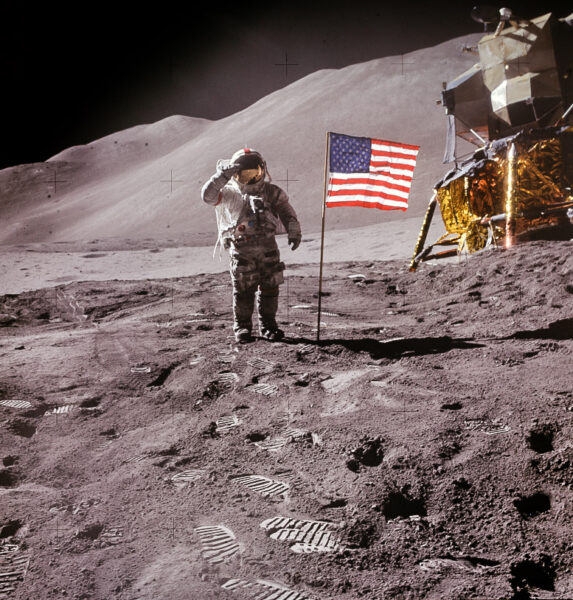
Like a Trampoline
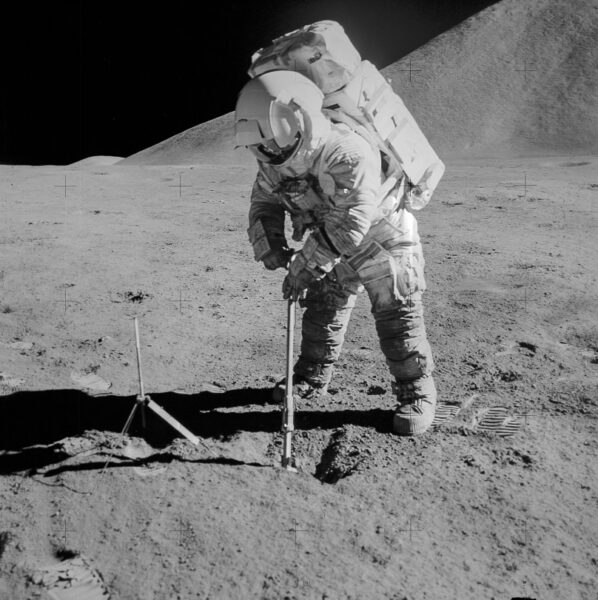
“Walking on the Moon feels just like walking on a trampoline,” Irwin later wrote in his autobiography, To Rule The Night. “The same lightness, the same bouncy feeling.” Irwin descended to the lunar surface shortly after Scott.
Working in Lunar Orbit
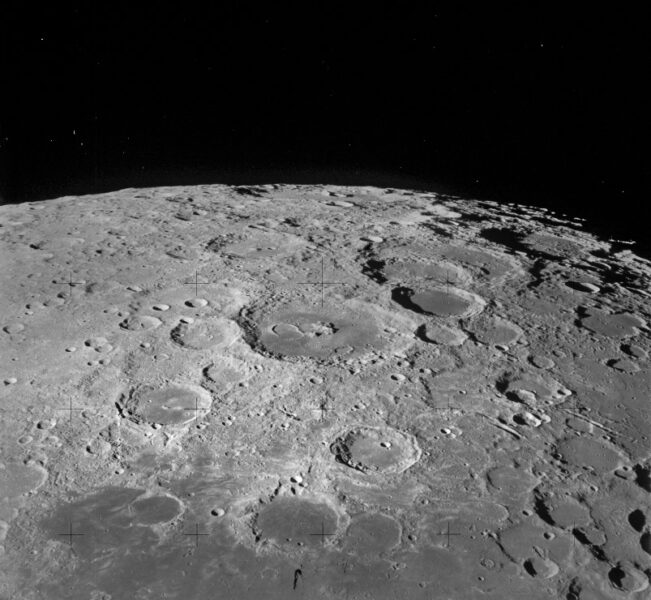
Worden later explained: ““[For] general photography within the spacecraft…I had inserted in the Flight Plan at the beginning of each day's activity those [film] magazines that would be required for that day's activities. That worked very well in helping me organize the photography for the day.”
Deploying the Rover
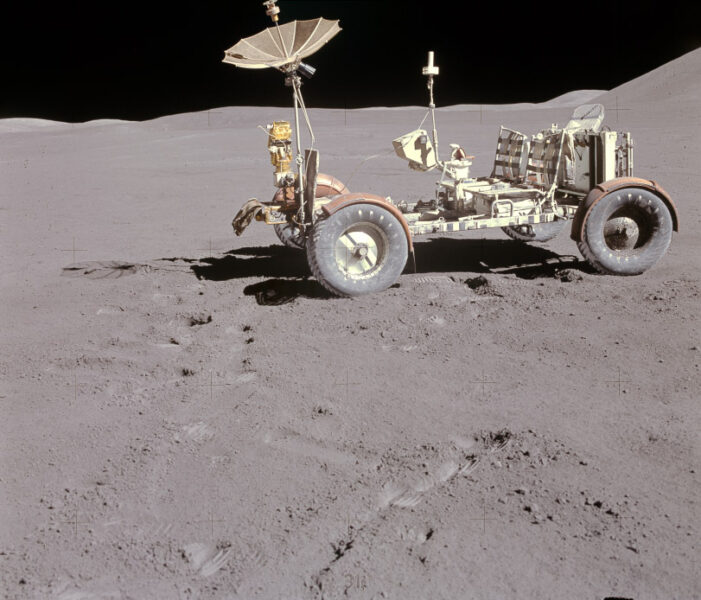
“We each had our particular thing to do on the rover,” said Scott. “I guess one man could have done it all with coaching from the other, but we had divided the tasks, and the timeline worked out well.”
Lunar Geology
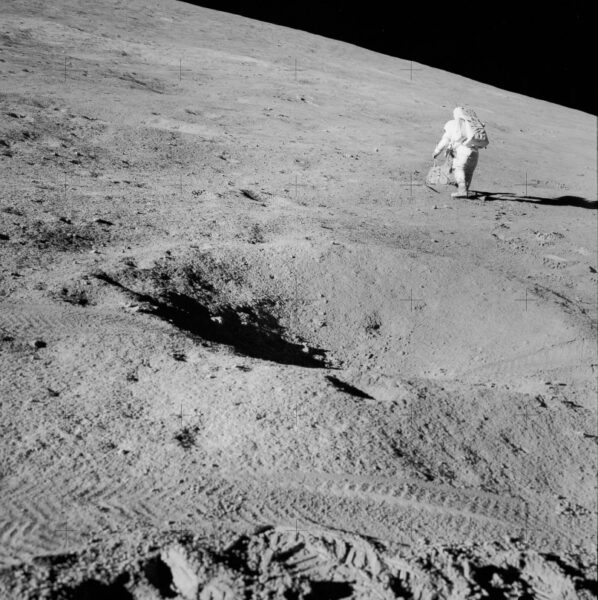
“There is one boulder!” Scott reported. “Very angular, very rough surface texture. Looks like it's partially . . . well, it's got glass on one side of it with lots of bubbles; and they're about a centimeter across. And one corner of it has got all this glass covering on it; seems like there's a linear fracture through one side. . . . It looks like we have maybe a breccia on top of a crystalline rock.”
The astronauts often used a geology hammer to remove small pieces of a large rock for sampling.
Rake Samples
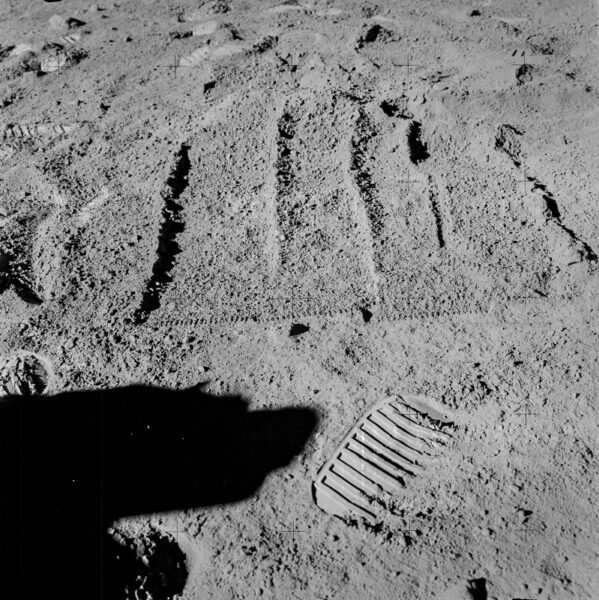
“The operation of the rake went just like our simulations,” Irwin noted. “It worked good for collecting the rock fragments as well as for transferring the soil. I thought it went real well.”
Sunlight
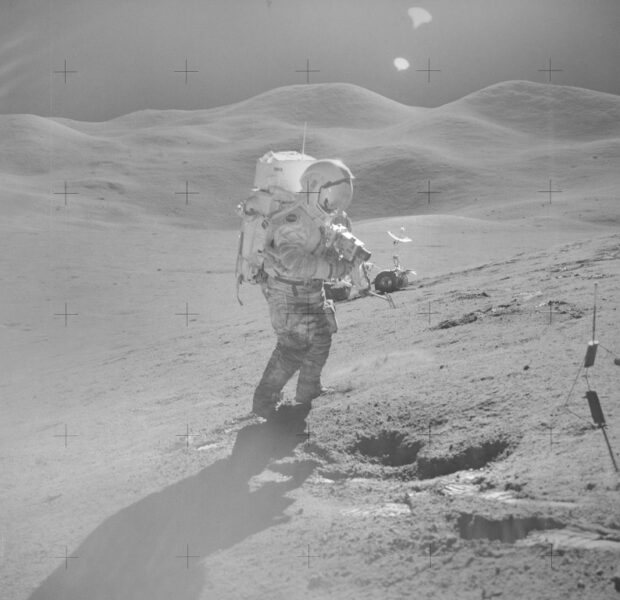
“After EVA-1, I had a headache because of the glare,” Irwin later remembered. “On the second EVA, I pulled the glare shield down to protect my eyes and I felt good from then on.” Scott agreed: “With the visor up, it’s pretty tough going driving into the Sun.”
Smile, Jim!

At one point, Scott noticed a good photo composition and quickly directed his companion to make it even better.
Scott: “Hey, Jim?”
Irwin: “Yes?”
Scott: “Turn around a minute…look over here.”
The result? A photo showing the lunar lander, the rover, and a — presumably smiling? — Jim Irwin.
Working in the Suits

Laser Reflector
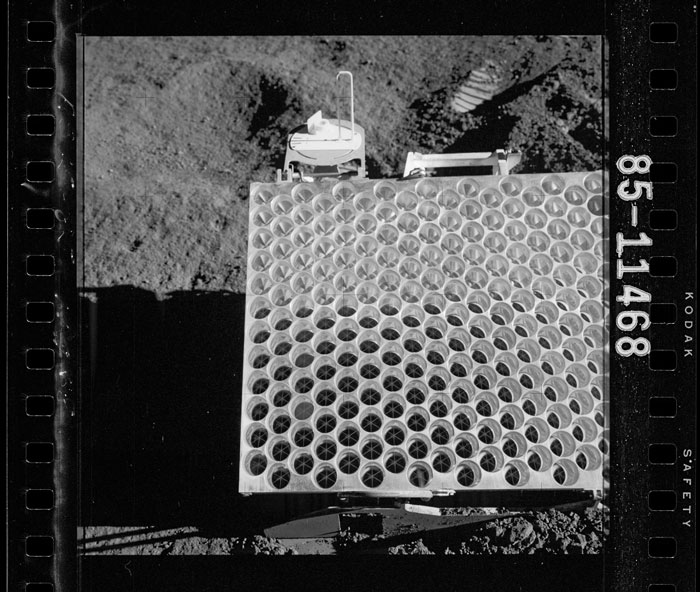
Naturally, it was important to keep lunar dust off of the retroreflector experiment. “I took the LRRR farther south than we had planned in order to try and keep it out of the trajectory as we took off, to keep the dust off of it,” Scott recalled. He then took photographs of the assembled device. “Okay, Joe. I got the LR cubed pictures, and it's still super clean.”
Double Shadows
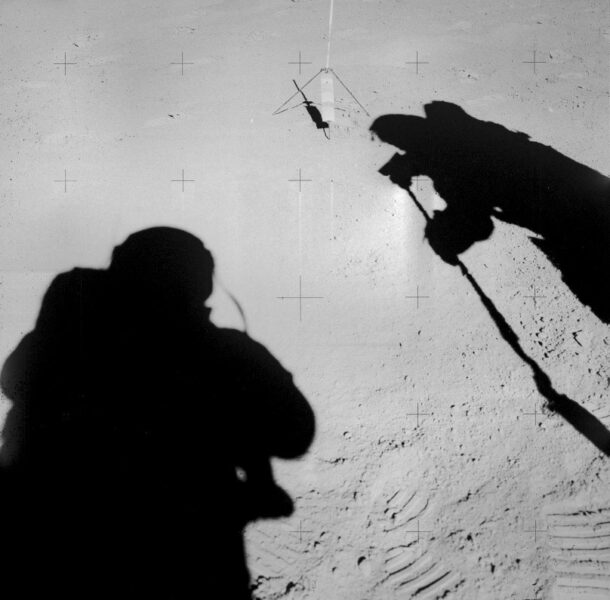
Making Tracks
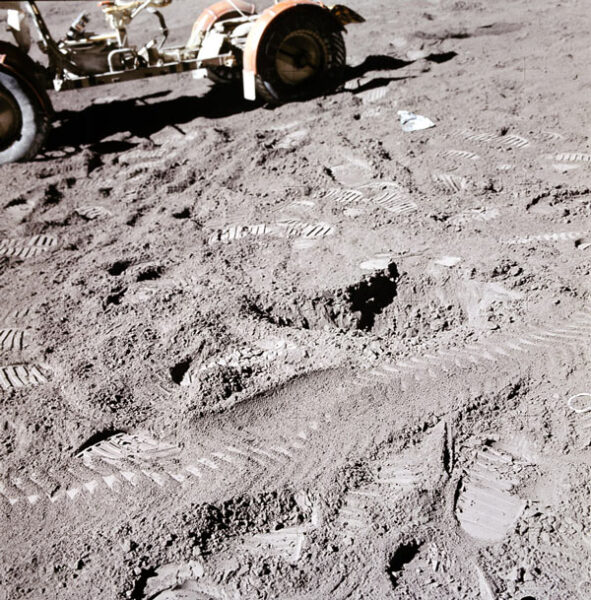
The Apollo 15 astronauts took many photographs of the tracks; at one point, Dave Scott remarked, “Look at the rover tracks; I'm going to take some pictures of the rover tracks here. And our boots — our boot prints, both. Look at the difference. That old rover is light.”
Zodiacal Light from Lunar Orbit
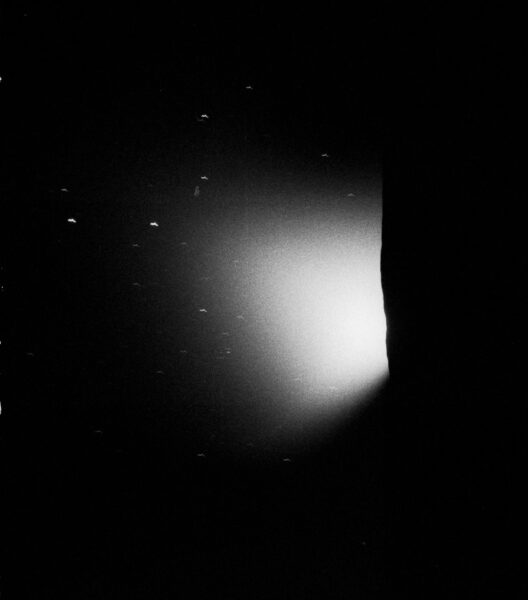
Meanwhile, Worden continued his work in lunar orbit, and he radioed his status to Houston: “Yes, so far everything — particularly the zodiacal light and the gegenschein calibration and that sort of thing — has been going just as per Flight Plan.”
A Lunar Canyon

“And out of sheer curiosity, how far back from what you would call the edge of the rille are the two of you standing now?”
Scott was initially a little confused by the question, until Houston clarified: “It looks like you are standing on the edge of a precipice on TV; that's why we're asking.”
The perspective of the rover’s camera and the use of a telephoto setting had combined to present the optical illusion that the astronauts were standing much closer to a cliff then they really were.
Scott quickly eased their minds. “Oh, gosh, no, Joe. It slopes right on down here.” In fact, the initial slope was so gentle that Scott couldn’t even see the bottom of the canyon from where they stood.
Boulders on the Edge of the Canyon
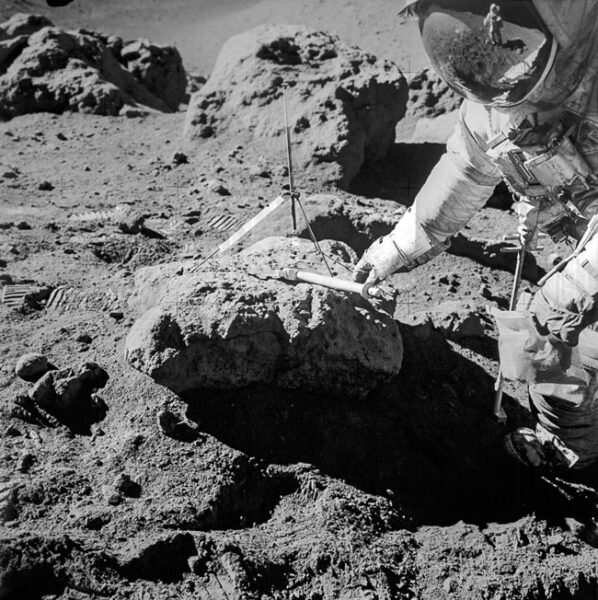
Drilling

The Moon’s surface can be quite dense a few inches down, and one of the core samples proved difficult to extract, requiring both moonwalkers to participate.
“We finally extracted the core stem,” Scott remembered. “Each of us had a handle of the drill under the crook of our elbow, and we got it up to the point where we could put our shoulders under it. Then with each of us with one handle of the drill on top of our shoulders, we pushed as hard as we could — it must have been at least 400 pounds — and finally got it to move and got it out.”
"Everything ran just beautifully"

One Last Drive
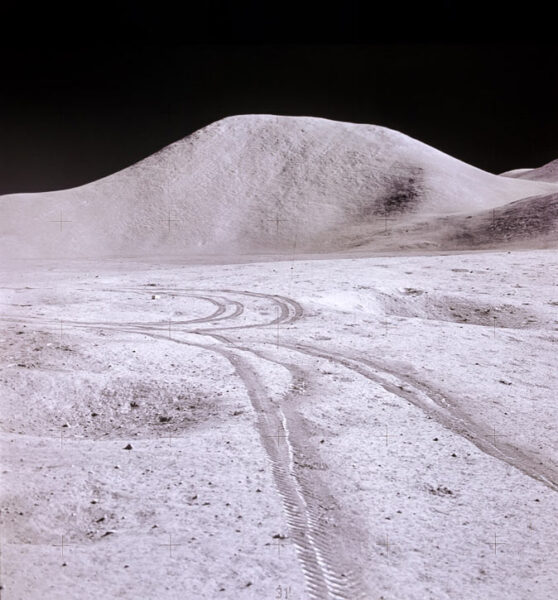
Scott: “Oh, look at the mountains today, Jim, when they're all sunlit; isn't that beautiful?”
Irwin: “Really is.”
Scott: “By golly, that's just super! It's — you know — unreal.”
Irwin: “Dave, I'm reminded of a favorite Biblical passage from Psalms. ‘I look unto the hills, from whence cometh my help.’ But of course, we get quite a bit from Houston, too.”
Return to Earth
After a successful liftoff from the lunar surface with 170 pounds of moon rocks on board, the two moonwalkers rendezvoused with Worden in the command module and returned to Earth.
Jim Irwin passed away in 1991, followed by Al Worden in 2020. Dave Scott is one of four living moonwalkers. Apollo 15 remains a fascinating mission, and a highly successful one — a true example of human ingenuity, training, bravery, and curiosity.
Happy 50th anniversary, Apollo 15!
 10
10









Comments
Anthony Barreiro
July 26, 2021 at 4:46 pm
These are beautiful and interesting photos. Apollo 15 was a great leap in the scientific exploration of the Moon. From what I've read elsewhere, Dave Scott was an especially enthusiastic geology student while training for the mission.
There is an error in the caption for the "Like a Trampoline" photo. As stated, the surface gravity of the Moon is one sixth of Earth's surface gravity. But the mass of the Moon is only 1.2 percent of Earth's mass. The Moon's radius is 27 percent of the Earth's radius. The surface gravity of a planet (or moon, or whatever) is proportional to the mass of the planet times the inverse square of the radius of the planet. Since the surface of the Moon is four times closer to the center of the Moon than the surface of the Earth is to the center of the Earth, the Moon's surface gravity is 16 times higher than it would be if the Moon were the same size as Earth, with only 1.2 percent as much mass.
You must be logged in to post a comment.
Cousin Ricky
July 26, 2021 at 6:46 pm
I noticed that. Looks like S&T readers are on the ball.
You must be logged in to post a comment.
Monica Young
July 27, 2021 at 9:40 am
Thank you for noting this, Anthony! I've fixed the post.
You must be logged in to post a comment.
Anthony Barreiro
July 27, 2021 at 11:57 am
Thanks Monica. Newton's still right about most things gravitational.
You must be logged in to post a comment.
Yaron Sheffer
July 26, 2021 at 4:50 pm
Had we kept the space pace, there would have been about 100 more Apollo flights by now. That's 100 more Rovers parked all over the Moon 🙂
You must be logged in to post a comment.
Dobsonite
July 30, 2021 at 11:51 pm
Heck, we'd have had at least one permanent base on the Moon right now! But the Recession of '74 was bad, man, real bad...but we could have bounced back quicker with a "Jobs With NASA" program. If, if, if. The middle word in Life.
Now we have Billionaire Boys Occasionally Blowing Up Stuff, and Other Billionaire Boys making it possible for other Billionaires to touch (ungh, ungh,) the edge of the upper atmosphere.
And one of them has the cheek to do it on Moon Day (July 20)!
Such progress! ("Can I get you another cup of tea, Mr. Bezos?")
You must be logged in to post a comment.
Yaron Sheffer
July 31, 2021 at 10:18 am
A cup of tea, or any other beverage, is vitally important in space travel. In 2001 (the movie) there is a lot of eating/drinking going on on all spacecraft, and even in other dimensions. Then there is the outrageously funny incident when Arthur the Hitchhiker asks the spaceship computer for a cup of tea!
You must be logged in to post a comment.
Don-Kerouac
August 1, 2021 at 11:12 am
An interesting concept but a very poor distribution of limited funds available for space research. Even in a fairy tale world where zero is spent on defense because totalitarian dictatorships did not exist and there was no corruption or incompetence in government at any level, budgets have to be drawn up and choices have to be made.
Still, an interesting concept. I suppose there would be a movement to "clean up" the Moon!
You must be logged in to post a comment.
Cousin Ricky
July 26, 2021 at 6:47 pm
I remember the name Al Worden from Mister Rogers’ Neighborhood.
You must be logged in to post a comment.
AB
August 1, 2021 at 9:36 pm
Thanks for this cool article! 🙂
You must be logged in to post a comment.
You must be logged in to post a comment.